This skyscraper in Chicago was once the tallest building in the world.
In this post, you’ll discover the ultimate list of facts about the Willis Tower, an amazing landmark in Chicago.
1. The tower used to have a different name
The tower was originally commissioned by “Sears, Roebuck & Co. in 1969,” simply known as “Sears,” which was the largest retailer in the world at that time.
The company had a total of 350,000 employees worldwide and thousands of office workers in the Chicago area The company wanted to centralize its headquarters so all of the office workers could work together under one roof in Chicago.
This cool skyscraper was originally called the “Sears Tower” and held this name for 36 years until it was renamed the “Willis Tower” as part of a lease contract that was signed in 2009.

2. Sears needed a lot of office space
A company with such a large number of employees working in the area required a huge skyscraper to accommodate all of its office workers.
On top of that, the company was rapidly expanding, and this was calculated in the predicted number of needed office spaces as well.
It was estimated that the company would require a grand total of about 3 million square feet (280,000 square meters) of total office space, which would eventually become just part of the entire building’s floor count.
To give a reference, that’s about 265,970 square feet (26,000 square meters) more than the Empire State Building, and 1,803,042 square feet (168,799 square meters) more than the Chrysler Building in New York City!

The Sears Tower was bound to be a massive building!
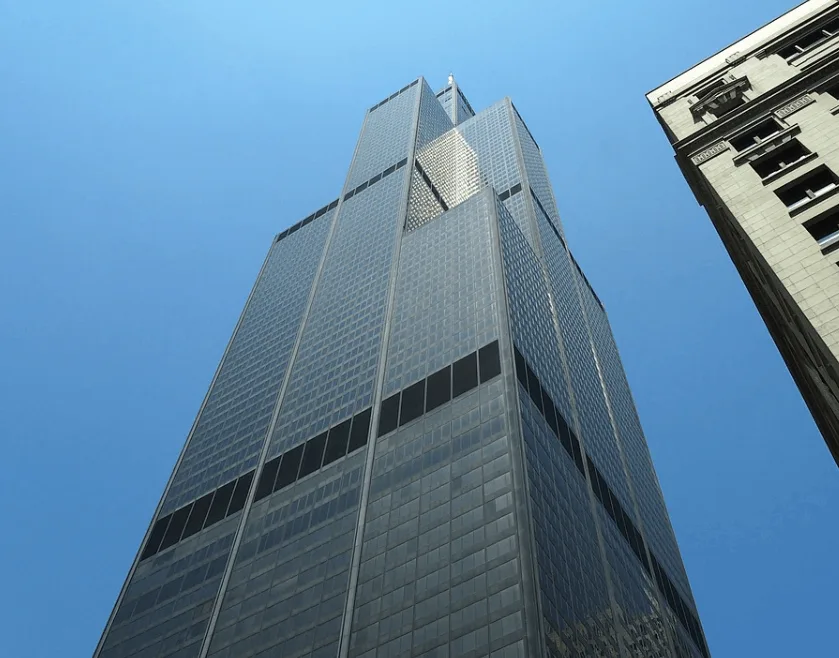
3. The tower could have been built on Goose Island
The first thing the Sears company did was try and find a suitable location to construct their massive headquarters.
They hired the law firm “Arnstein, Gluck, Weitzenfeld & Minow” to find them a location on the western edge of Chicago’s Loop, the main section of Downtown Chicago and the city’s main business district.
Before deciding on its current location, which is a two-block area bounded by Franklin Street on the east, Jackson Boulevard on the south, Wacker Drive on the west, and Adams Street on the north, the law firm proposed another area as well.
This proposed area, which was eventually rejected, was located on Goose Island, a 60 acres (0.65 sq km) artificial island just northwest of Downtown Chicago.

4. It was the tallest building for a quarter-century
When the Willis Tower was completed, it became the tallest building in the world, surpassing the World Trade Center in New York. It has an architectural height of 1,450 feet (442 meters).
It held this amazing record for a total of 25 years until it was surpassed by the Petronas Towers in Kuala Lumpur (482.6 feet – 451.9 meters) in 1998, which were in turn surpassed by Taipei 101 (509.2 meters 1,671 feet) in 2004.
At the moment, the tallest building in the world is Burj Khalifa (828 meters 2,717 feet), but the race to the sky isn’t stopping any time soon.
It will soon be surpassed by the Jeddah Tower (over 1 kilometer) in the near future, and by the Sky Mile Tower in Tokyo (over 1 mile) in the distant future as well!

5. It lost another remarkable record after just 3 years
The Sears Tower didn’t just become the tallest building in the world, it actually became the tallest man-made free-standing structure in the world altogether!
This only lasted for 3 years because it was surpassed by the CN Tower in Toronto which stands 553.3 meters (1815.3 feet) tall.
The Willis Tower remains the third-tallest free-standing structure in the Americas and the eight-tallest in the world at the time of writing this post (May 2020).
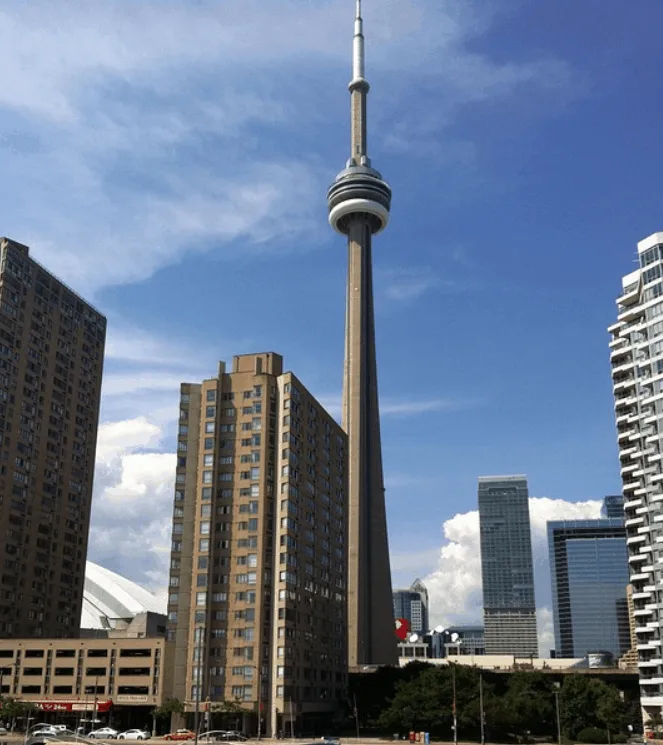
6. The engineer was called the “Einstein of structural engineering”
To start planning the tower after the location was decided, the Sears Company hired Skidmore, Owings & Merrill (SOM), a global architectural and engineering firm.
Their team of specialists included Peruvian-American architect Bruce Graham (1925-2010) and Bangladeshi-Pakistani structural engineer Fazlur Rahman Khan (1929-1982).
Graham has been of the most defining architects in Chicago and apart from the Sears Tower, also designed the Inland Steel Building and the John Hancock Center. He was also involved in the planning of Canary Wharf, the secondary business district in London.
Khan, on the other hand, was known to have initiated a “Renaissance in skyscraper construction” in the second half of the 20th century. He invented the tubular design for skyscrapers.
For this, Khan has been referred to as the “Einstein of structural engineering” and the “Greatest Structural Engineer of the 20th Century.”
It’s fair to conclude that the construction of the Willis Tower was in good hands!
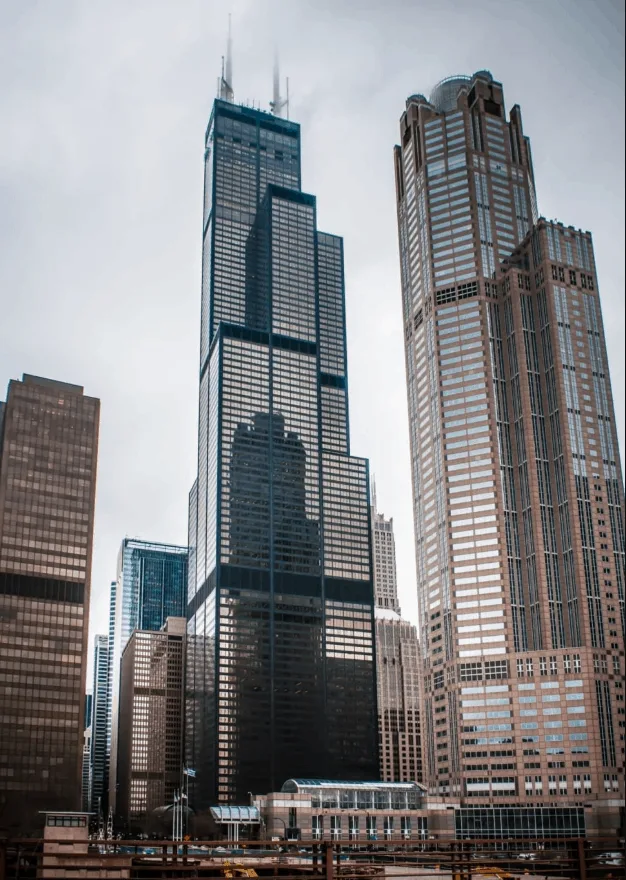
7. The innovative design proved to be very efficient
The Willis Tower consists of a total of 9 square tubes each is a separate building. These 9 separate buildings come together to form one tower. The buildings form a 3 by 3 matrix which has a square base with 225-foot (69 meters) sides.
This innovative way of constructing the International Style building made the tower way more efficient than the older high-rises that were built. It both rose higher than for example the Empire State Building, provided more space, and cost a lot less per unit area.
In that sense, the construction of the Willis Tower marked one of the most significant moments in the history of skyscrapers, as its unique design at the time would be replicated for numerous other supertalls in the future, including the Burj Khalifa!

8. Constructing the building resulted in some trouble
In the period that the Sears Company started planning the construction of their headquarters, they were virtually unrivaled in the retail space. That’s why as planning evolved, the predicted growth became bigger and bigger, which resulted in the tower ending up higher and higher as well.
The groundbreaking of the tower happened in 1970 and the first steel of the bundled tube was put into place in April 1970. Everything seemed to be going exactly as planned.
This wasn’t until the 50th floor was reached and lawsuits started being filed. The main issue was that television watchers feared that the tower would disturb the signal in the Chicago area.
On May 17, 1972, the judge dismissed the case claiming that “there is nothing he can do to stop construction and that it was up to the television companies to build higher antennas to ensure good reception.”
After this legal trouble, the construction resumed and the tower was completed within 3 years in May of the year 1973.
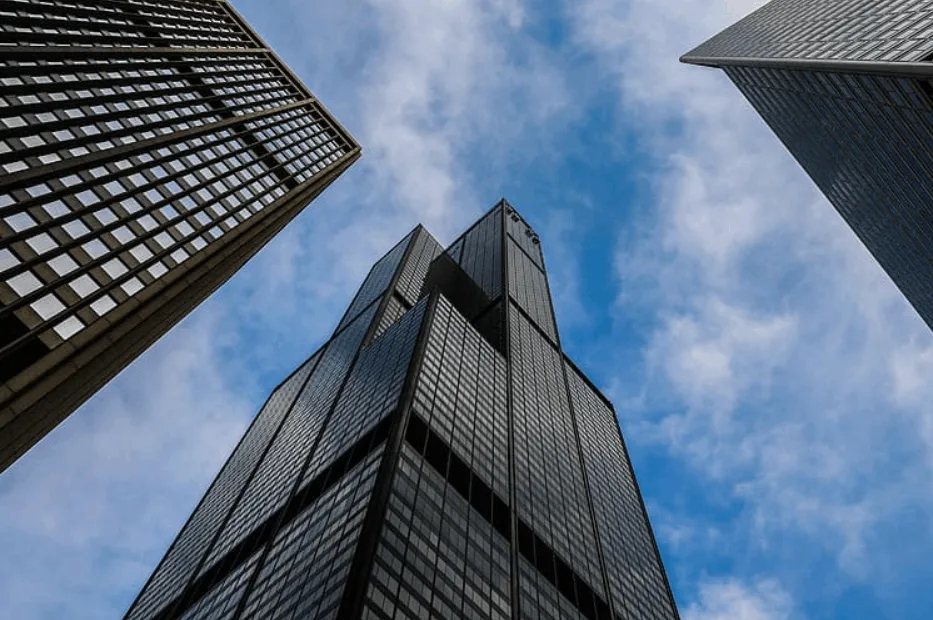
9. The Sears Company growth prediction was a bit off
While the Sears Company remained virtually unrivaled during the planning of the tower, but things started changing rapidly in the following decade.
Companies such as Walmart, Kohl’s, and Kmart all started taking a big bite in the retail market cake resulting in a drastically lower predicted growth than initially assumed.
One of the strangest facts about the Willis Tower is that it stood half-vacant for almost a decade as the Sears Company wasn’t able to fill the tower with its own employees, and it couldn’t find enough tenants to fill up the vacant office space.
Despite continuous efforts to make the tower appeal to more tenants, Sears ended up trying to sell the tower in the late 1980s.
Unsurprisingly, they didn’t find a buyer and were forced to take out a mortgage note on the tower for $850 million from Metlife and AEW Capital Management, which would mature in 2005.

10. The tower was renamed in 2009
The 1990s saw a shift in ownership when the Toronto-based TrizecHahn Corporation bought the ownership rights of the tower from AEW in 1997 for $110 million USD. This company also held ownership rights in the CN Tower in their own city at that time.
They were very optimistic and assumed the tower’s value would quickly shoot up to about $1 billion USD. The same problem to attract enough tenants to fill the huge amount of office space remained, however, and this didn’t happen and they ended up selling their rights in the tower back to Metlife.
Despite multiple changes in ownership in the 2000s, it wasn’t until the year 2009 that a company, the London-based insurance broker Willis Group Holdings, acquired the naming rights as well.
Since then, the tower is being referred to as the “Willis Tower.”
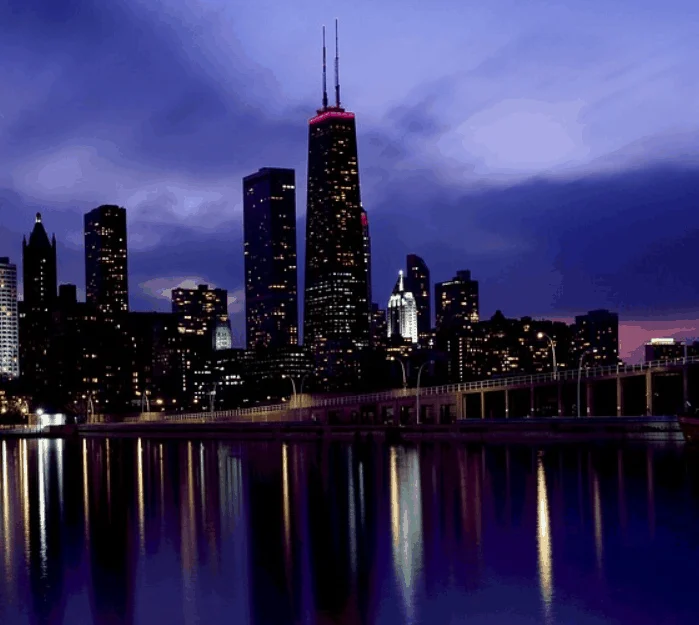
11. One of the biggest US airlines moved into the Willis Tower
The main problem of finding the perfect tenant to occupy the huge amount of office space was finally solved on August 13, 2012.
One of the biggest airlines in the United States, “United Airlines,” moved its headquarters from 77 West Wacker Drive to the Willis Tower.
The result?
The value of the tower shot up and potential buyers were lining up! It was eventually the Blackstone Group that purchased the tower in 2015 for a grand total of $1.3 billion USD, the largest amount ever paid for a skyscraper outside of New York!
Just 2 years later they announced a $500 million renovation project for the tower which also includes a 6-story shopping mall as well.
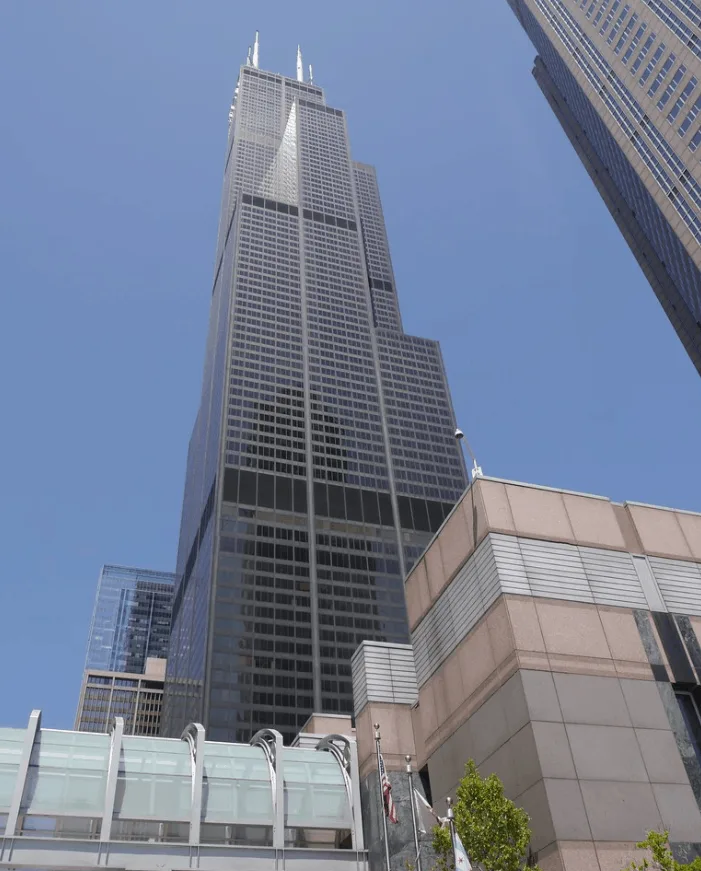
12. The Skydeck is the highest in the United States
The Skydeck in the Willis Tower is the highest observation deck in the United States. It can be found on the 103rd floor and is located at a height of 1,353 feet (412.4 meters).
It’s one of the most popular tourist attractions in all of Chicago and is visited by nearly 2 million people every year!
Are you brave enough?
Then you can take a leap of faith and stand on one of the glass balconies which extend about 4 feet (1.2 meters) from the tower’s facade. Because the floors of the balconies are made of glass, you can directly see the streets below!
Apart from the glass balconies, the amazing views of the Chicago skyline, Lake Michigan, and the Illinois plains on a clear day make the Skydeck an amazing experience.
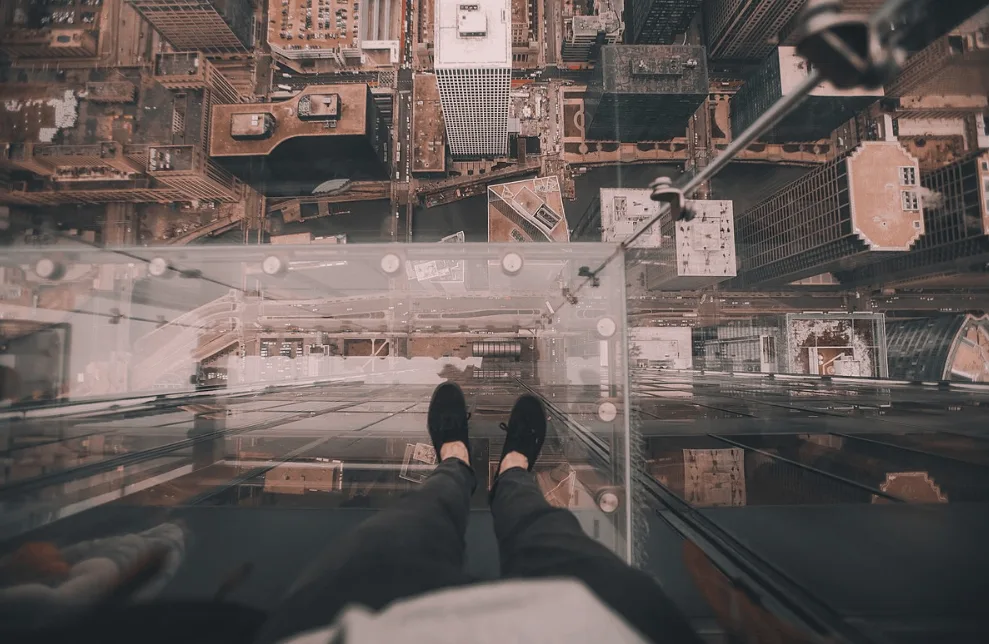
Quick Facts about the Willis Tower
13. The Willis Tower has an architectural height of 1,450 feet (442 meters).
14. The height to the tip is 1,729 feet (527 meters).
15. The tower has a total of 110 floors and the top floor is located at a height of 1,354 feet (413 meters).
16. Construction of the tower started in 1970 and was completed in May 1973.
17. The total floor area in the tower is 4,477,800 square feet (416,000 square meters).
18. There are a total of 104 elevators inside of the building, and 16 of those are double-deckers.
19. It only takes 60 seconds to go from the ground floor to the 103rd floor where the Skydeck is located.
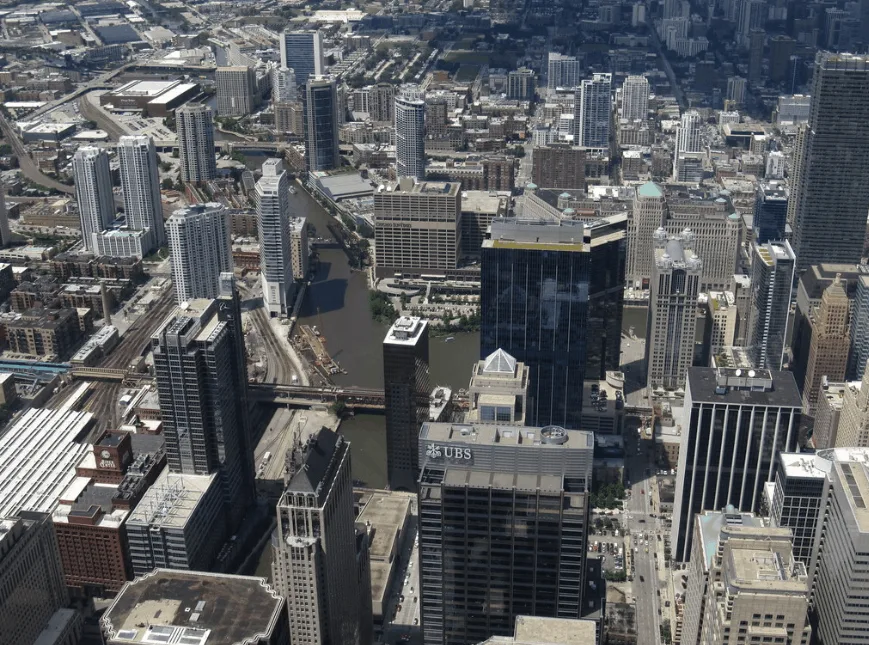
20. The Willis Tower used to be the tallest building in the Western Hemisphere for 41 years until it was surpassed by the tallest skyscraper in the United States, “One World Trade Center.”
21. It remains the third tallest building in the United States after One World Trade Center and the Central Park Tower.
22. At The start of the construction, Sears bought 15 buildings from about 100 owners to clear the area. It also paid $2.7 million USD to the city of Chicago for an additional lot on Quincy Street. It’s built on a total area of 351,846 square meters (3,787,200 sq ft).
23. The structural engineer, Dr. Fazlur Khan, achieved such an amazing feat of engineering with the tower that a sculpture honoring him was placed in the lobby.
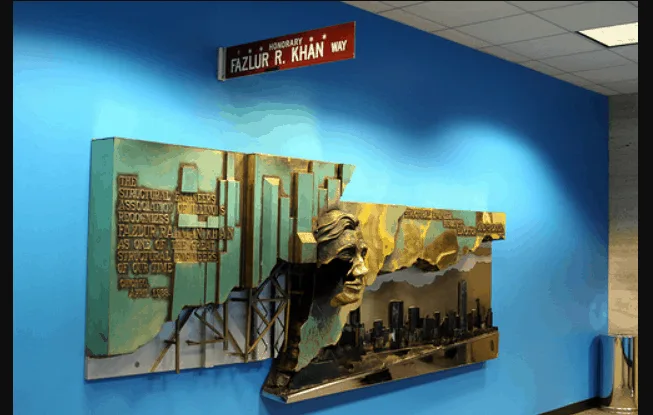
24. The tower cost a total of $150 million USD to construct, which is the equivalent of over $860 million USD in 2020.
25. The construction cost was very minimal for such a huge skyscraper. In comparison, Taipei 101, which was built in 2004, costs about 3 times as much.
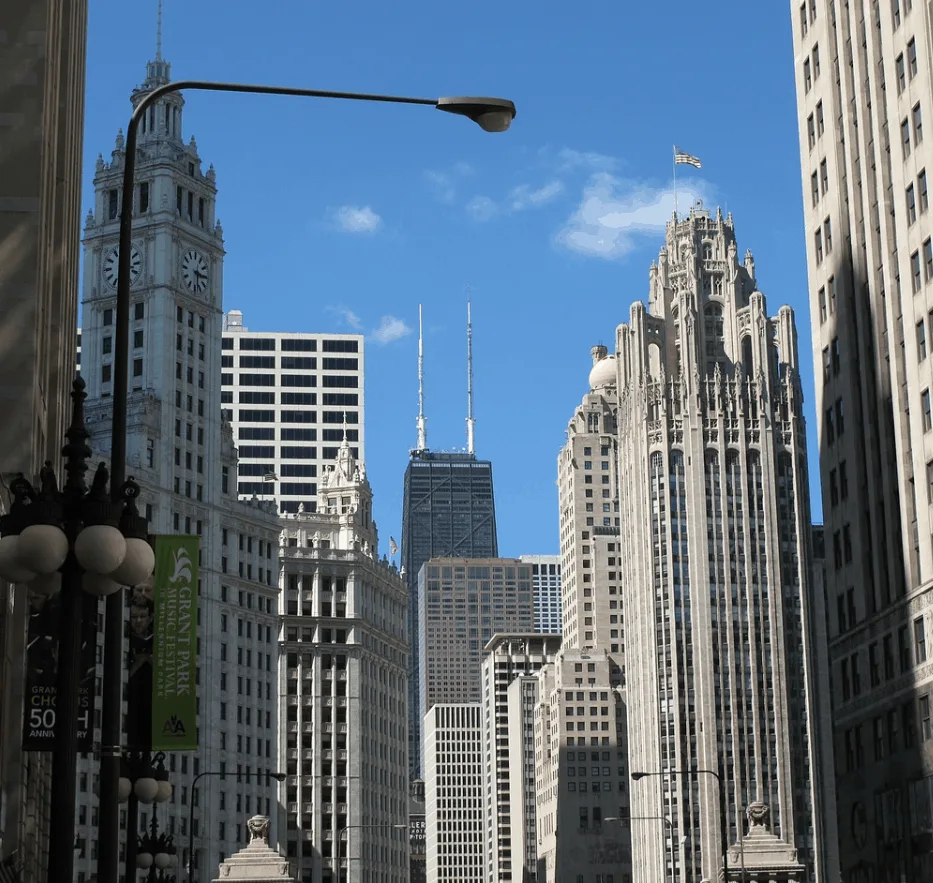
26. Because of this economic design, the developers were able to install 40,000 water sprinklers for a total cost of $4 million USD, even though regulations didn’t require this at the time.
27. Sears’ attempt to enhance the appeal of the tower to find more tenants resulted in the construction of a new pedestrian entrance in 1984. This was mockingly referred to as the “Lunchbox Entrance,” which kinda defeated its main purpose in terms of appeal.
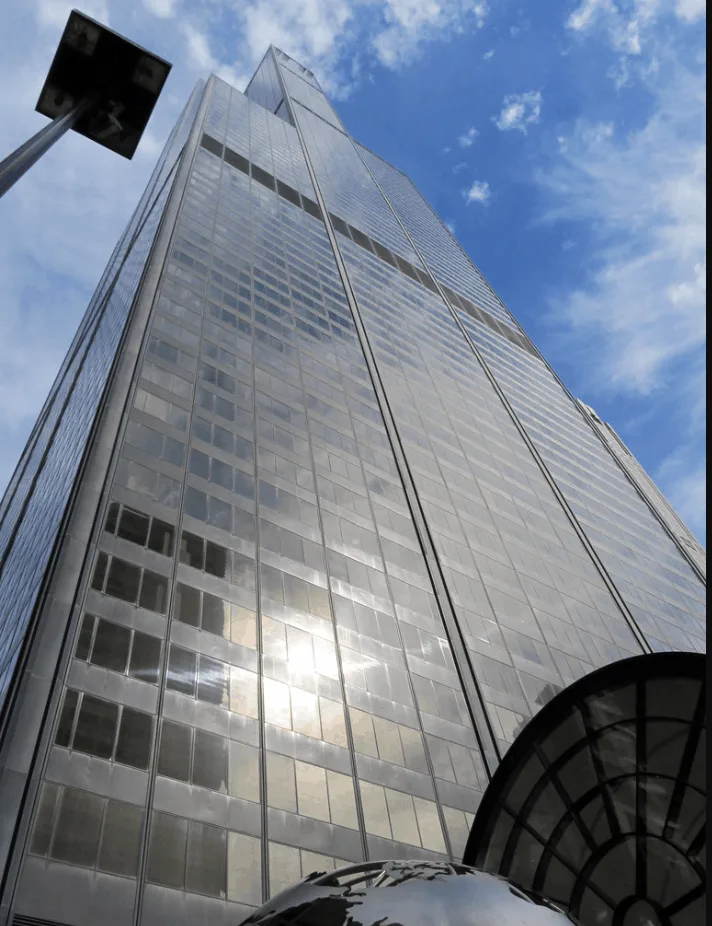
28. The tower was still referred to as the “Sears Tower” for about 6 years (2003-2009), even though the Sears Company didn’t have any ownership rights in the tower anymore.
29. Some visitors had the scare of their life when the protective glass of one of the Skydeck balconies started cracking in 2019. Luckily, nobody was injured during the incident.
30. Nobody should fear standing on the glass of the Skydeck balconies though because they can support a total weight of 5 short tons (4.5 metric tons).
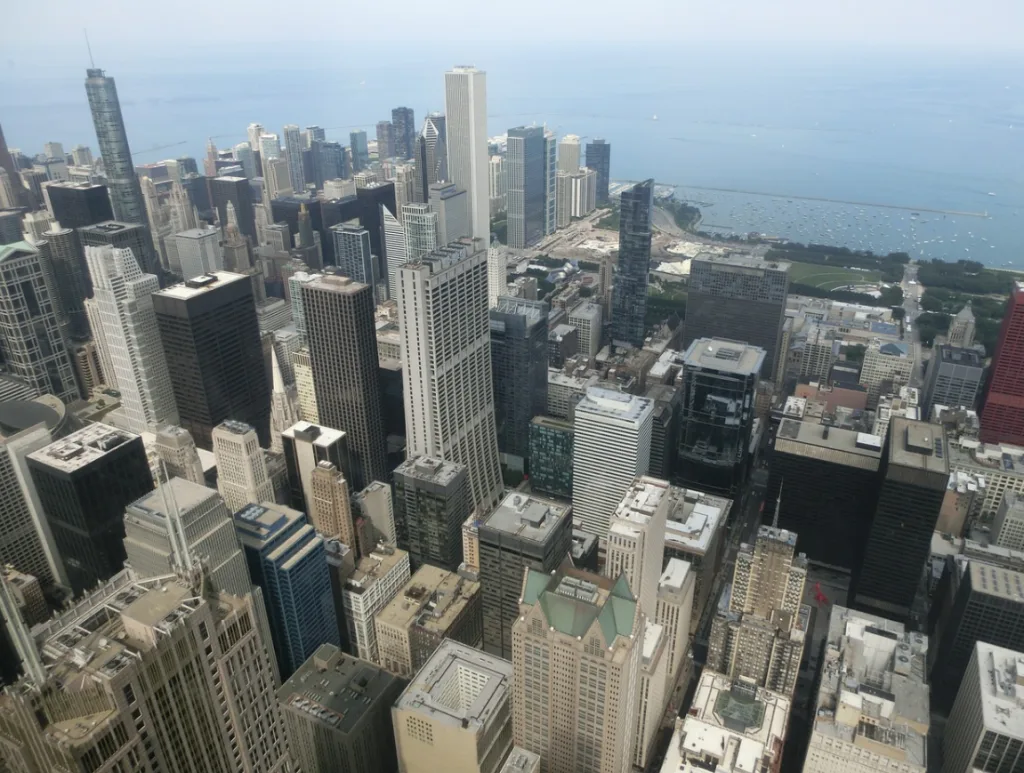
31. The Willis Tower is one of the many skyscrapers that French spiderman Alain Robert has climbed without any form of protective gear. He conquered the tower with his bare hands and feet in August 1999.
32. Will the tower still be referred to as the “Willis Tower” in the future? That remains to be seen because the naming rights expire in 2024!
33. The tower remains the tallest steel-structure building in the world. All taller buildings use a form of concrete or composite.
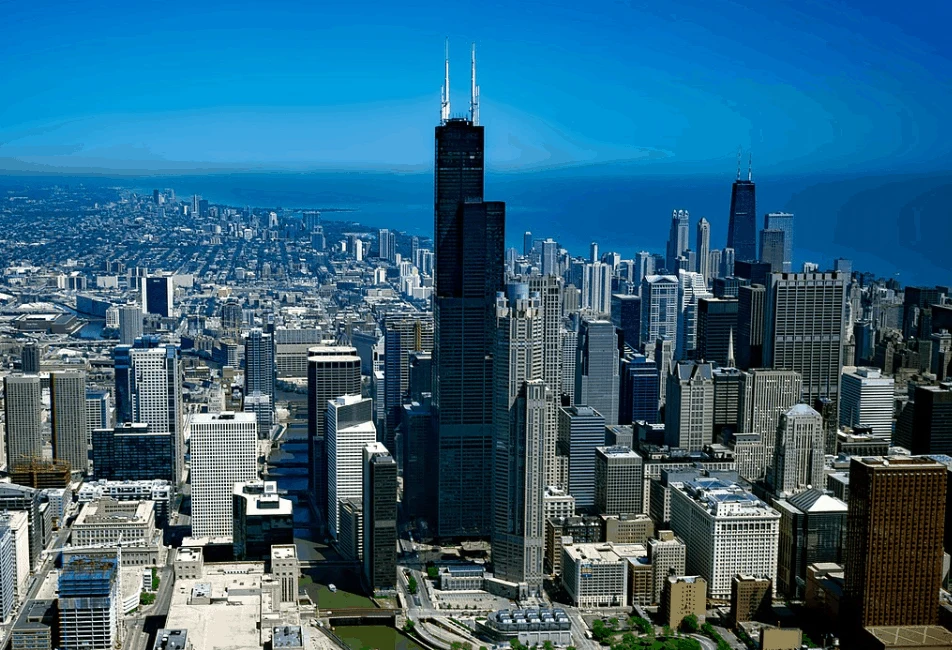

Leave a comment
You must be logged in to post a comment.